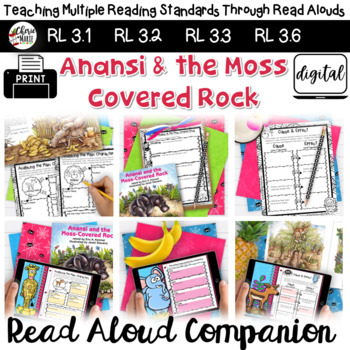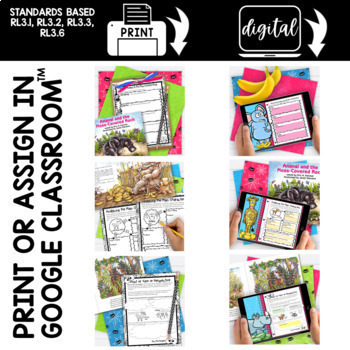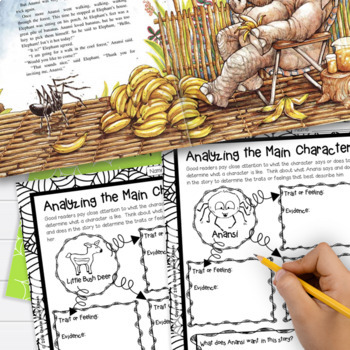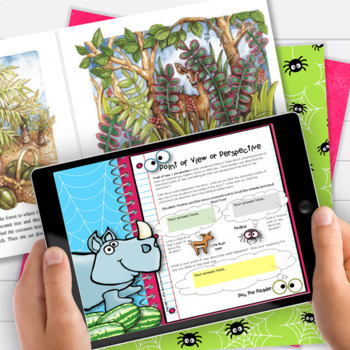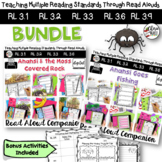Folktales Anansi & the Moss Covered Rock Activities 3rd Grade RL3.2 3.3 3.6
- Zip
- Google Apps™
- Microsoft OneDrive

What educators are saying
Also included in
- Get the most out of your read alouds by teaching multiple reading standards each time you dive into these fabulous folktales! By repurposing these read alouds with a different focus using these engaging activities, your students will master core reading standards while applying a variety of readingPrice $6.40Original Price $8.00Save $1.60
Description
Get the most out of your read aloud by teaching multiple reading standards each time you dive into this fabulous folktale! By repurposing this read aloud with a different focus using these engaging activities, your students will master core reading standards while applying a variety of reading strategies.
With these content rich activities, students will retell and summarize the story, analyze characters' traits, feelings & motives, determine the central message, distinguish their point of view from that of the characters,' and think critically about the story through the rigorous essential questioning posed for response to reading. Your students will not only be highly engaged but they will also find much success with these standards-based targets as they become familiar with the story each time it is reread for a different purpose. In both digital and print formats.
MUST SEE PREVIEW!
This has been bundled with another Anansi tale: Folktales: Anansi Bundle, which includes Anansi & the Moss Covered Rock and Anansi Goes Fishing, as well as tools for students to write their own Anansi stories.
The activities in this resource were designed to engage students in:
• retelling & summarizing the story
• analyzing characters' traits, feelings, and motives
• determining the central message / theme of the folktale using guiding questions
• identifying cause and effect
• determining the points of view / perspective of the characters and the reader’s own POV
• critically thinking about the story through reading response prompts
Included are the following:
✔ Teacher’s notes digging deeper into the text
✔ SWBST chart for summarizing the story
✔ Recounting the story: first, then, next, finally
✔ Analyzing characters’ traits & feelings graphic organizers (Anansi & Little Bush Deer)
✔ Determining the central message / theme
✔ Cause & Effect graphic organizers (2 types for scaffolding instruction)
✔ Analyzing characters’ & reader’s points of view
✔ 6 reading response prompts: These questions
prompt students to make inferences,
evaluate, synthesize, and make connections
✔ Answer keys to guide instruction
For more fabulous folktale, fable, and fairy tale resources, CLICK HERE!
⭐⭐⭐⭐⭐Just see what teachers are saying specifically about what they love about this resource in the ratings below.

